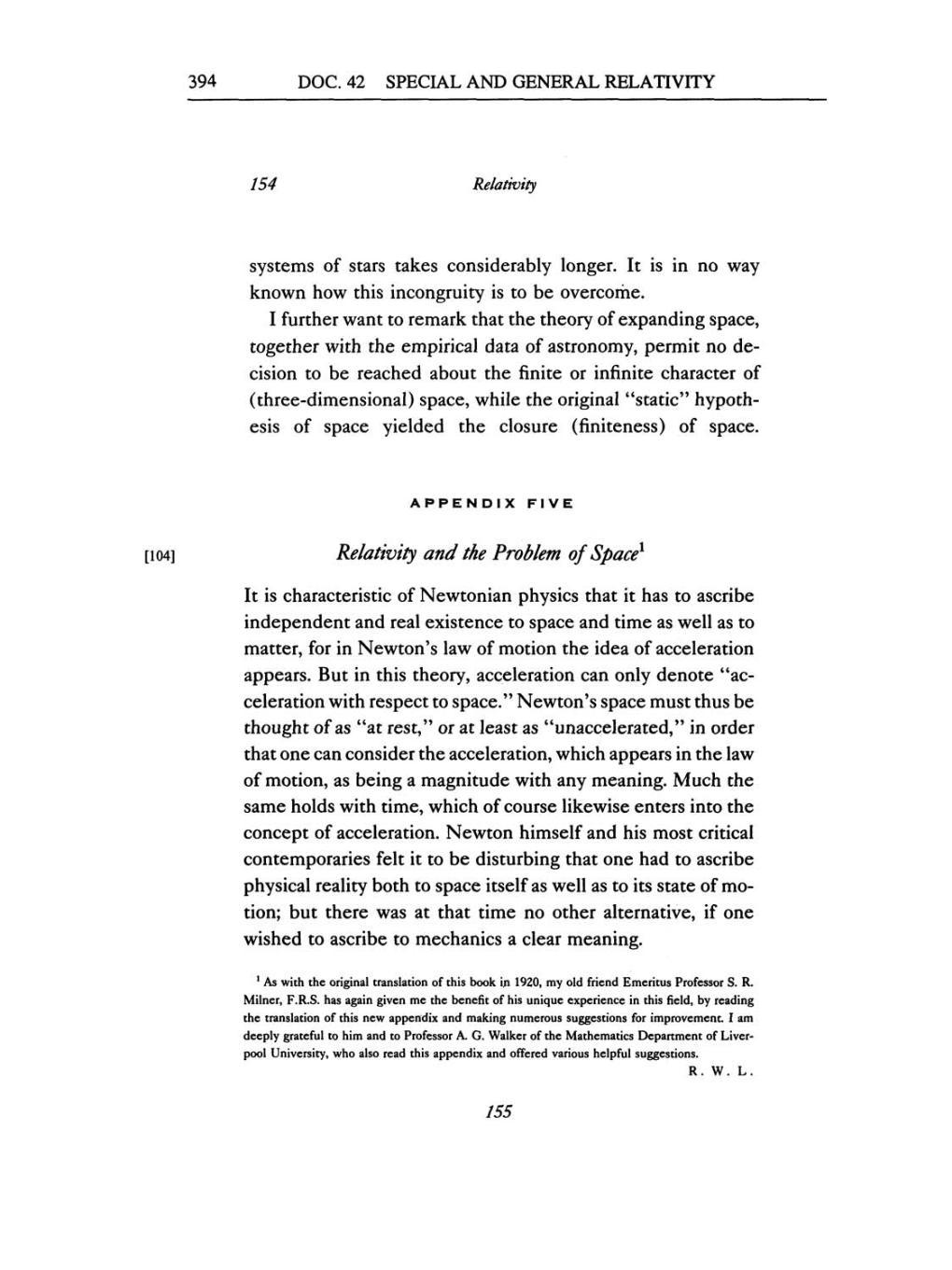394 DOC. 42 SPECIAL AND GENERAL RELATIVITY
154
Relativity
systems
of
stars
takes
considerably longer.
It
is in
no
way
known how this
incongruity
is
to
be
overcome.
I further
want
to
remark
that
the
theory
of
expanding space,
together
with the
empirical
data of
astronomy, permit
no
de-
cision
to
be reached about the finite
or
infinite character of
(three-dimensional)
space,
while the
original
"static"
hypoth-
esis of
space yielded
the closure
(finiteness)
of
space.
appendix five
Relativity
and
the
Problem
of
Space1
It
is
characteristic
of
Newtonian
physics
that
it
has
to
ascribe
independent
and real existence
to space
and time
as
well
as to
matter, for in
Newton's
law
of motion the idea
of
acceleration
appears.
But in this
theory,
acceleration
can
only
denote "ac-
celeration with
respect to space."
Newton's
space must
thus be
thought
of
as
"at
rest,"
or
at
least
as
"unaccelerated," in order
that
one
can
consider the
acceleration,
which
appears
in
the
law
of
motion,
as
being
a
magnitude
with
any meaning.
Much the
same
holds
with
time,
which of
course
likewise
enters
into the
concept
of acceleration. Newton himself and his
most
critical
contemporaries
felt it
to
be
disturbing
that
one
had
to
ascribe
physical reality
both
to
space
itself
as
well
as
to
its
state
of
mo-
tion;
but there
was
at
that
time
no
other
alternative,
if
one
wished
to
ascribe
to
mechanics
a
clear
meaning.
1
As
with the
original
translation of this book in
1920, my
old
friend Emeritus Professor
S. R.
Milner,
F.R.S. has
again given
me
the benefit of
his unique experience
in this
field,
by reading
the translation of this
new appendix
and
making
numerous suggestions
for
improvement.
I
am
deeply
grateful
to
him and
to
Professor
A. G.
Walker of the Mathematics
Department
of Liver-
pool
University,
who
also
read this
appendix
and offered various
helpful suggestions.
[104]
R.
w.
L.
155
